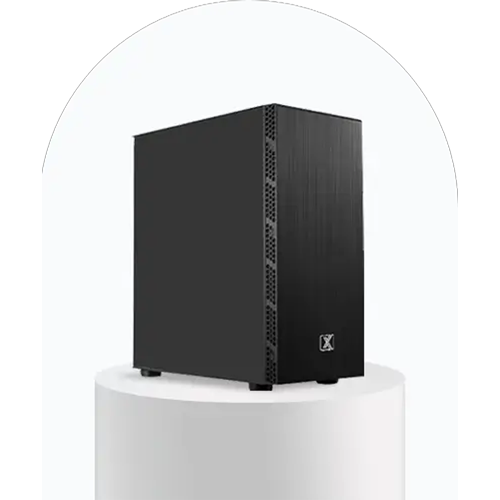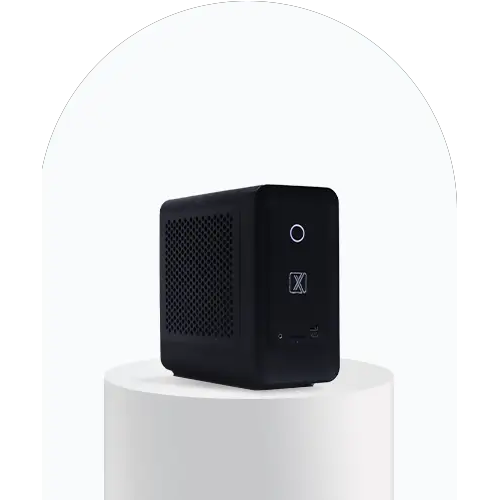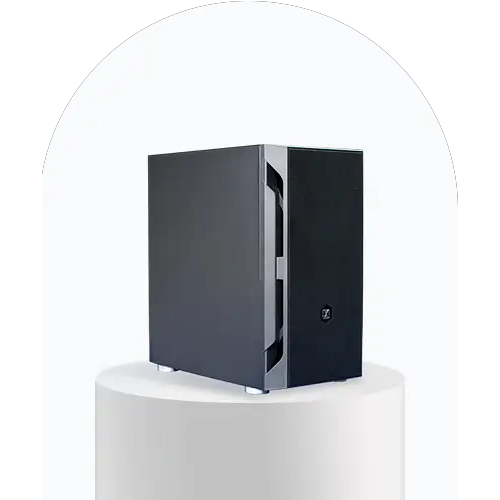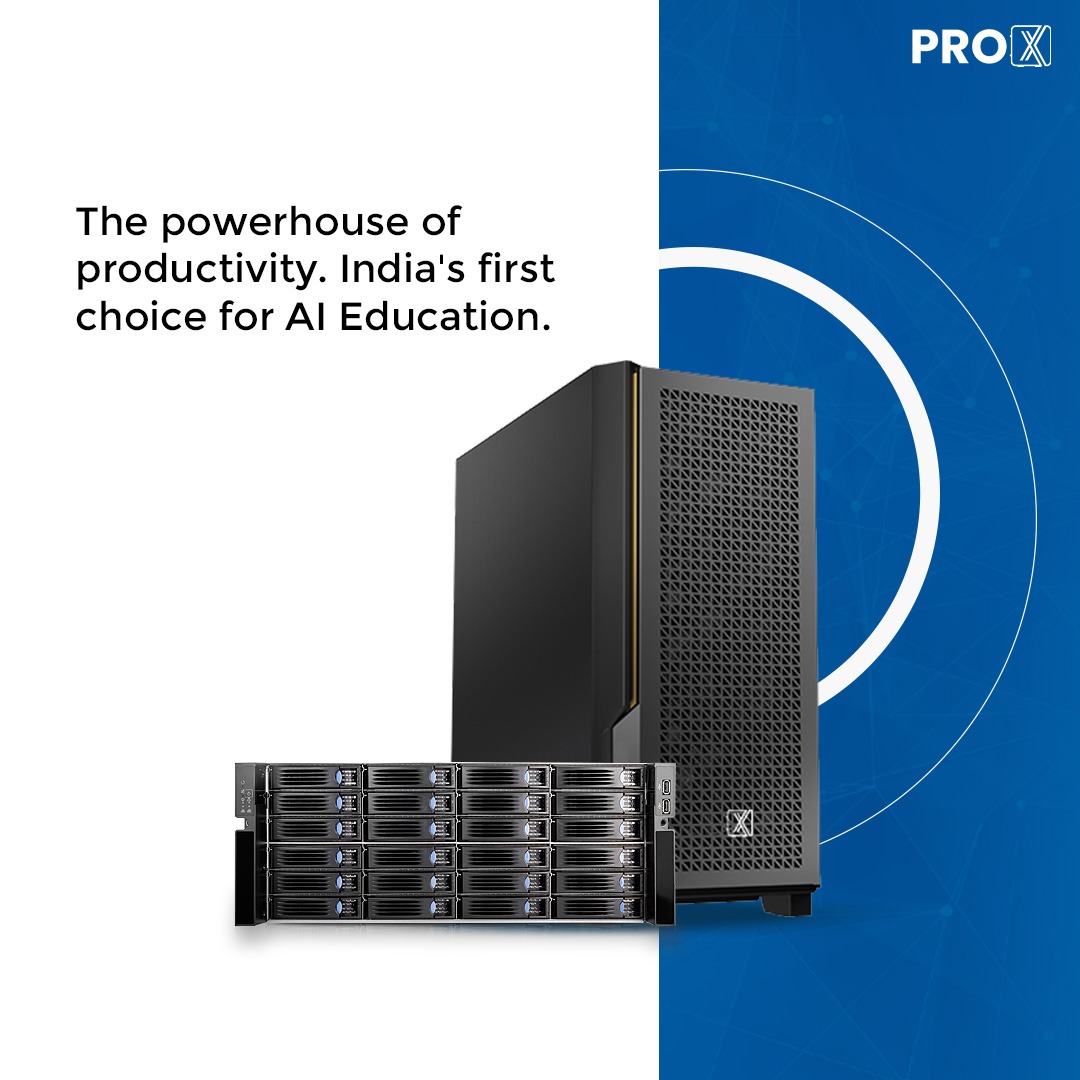Machine learning (ML) has grown rapidly, and the need for processing power has increased. Two main types of processors are used for handling ML tasks: CPUs (Central Processing Units) and GPUs (Graphics Processing Units). Understanding the strengths and weaknesses of each can help you choose the right hardware for your ML projects.
What is a CPU?
CPU
A CPU, or Central Processing Unit, is the primary component of a computer that performs most of the processing. It is often referred to as the "brain" of the computer. CPUs are designed to handle a wide range of tasks, from running applications to managing system operations.
What is a GPU?
GPU
A GPU, or Graphics Processing Unit, was originally designed to render images and videos. Over time, GPUs have evolved to handle complex computations, making them suitable for parallel processing tasks. This ability makes GPUs ideal for ML tasks, which often require handling large datasets and performing many calculations simultaneously.
Key Differences Between CPUs and GPUs
Key Differences
Architecture:
- CPUs: Have fewer cores (usually 2-16) optimized for sequential processing. Each core is powerful and can handle complex tasks.
- GPUs: Have thousands of smaller, less powerful cores designed for parallel processing. This makes GPUs suitable for tasks that can be divided into many smaller tasks.
Performance:
- CPUs: Excel in tasks that require high single-thread performance. They are better for tasks that need quick decision-making and complex logic.
- GPUs: Shine in tasks that can be parallelized. They handle repetitive tasks efficiently, making them ideal for training ML models with large datasets.
Flexibility:
- CPUs: More versatile and can run a wide variety of tasks. They are essential for general computing needs and running the operating system.
- GPUs: Specialized for certain tasks. While they excel at parallel processing, they are not as flexible as CPUs for diverse tasks.
Power Consumption:
- CPUs: Generally consume less power than GPUs. They are designed to balance performance with power efficiency.
- GPUs: Consume more power due to their high core count and parallel processing capabilities. This is an important consideration for large-scale deployments.
When to Use CPUs for Machine Learning
When to Use CPUs for Machine Learning
- Smaller Datasets: When working with smaller datasets, the high single-thread performance of CPUs can be sufficient. They can quickly handle the data without the need for parallel processing.
- Complex Algorithms: Algorithms that require complex logic and decision-making benefit from the CPU's architecture. CPUs can handle the intricacies better than GPUs.
- Data Preprocessing: Tasks like data cleaning, normalization, and feature engineering are often handled by CPUs. These tasks can be complex and involve diverse operations that are suited to CPU capabilities.
- Training Simple Models: For simple models like linear regression or logistic regression, CPUs can be more than adequate. These models do not require the massive parallel processing power of GPUs.
When to Use GPUs for Machine Learning
When to Use GPUs for Machine Learning
- Larger Datasets: GPUs excel when working with large datasets. The parallel processing power allows them to handle massive amounts of data efficiently.
- Training Deep Learning Models: Deep learning models, such as neural networks, involve numerous matrix multiplications and operations that can be parallelized. GPUs can speed up the training process significantly.
- Real-Time Processing: Applications that require real-time processing, like autonomous vehicles or real-time image recognition, benefit from the speed of GPUs.
- Batch Processing: When processing data in large batches, GPUs can perform the operations simultaneously, saving time and resources.
Performance Comparison: CPUs vs. GPUs
CPUs vs. GPUs
Training Speed
- CPUs: Training speed is slower for large datasets due to fewer cores and sequential processing.
- GPUs: Training speed is much faster for large datasets due to parallel processing. Multiple calculations can be done at the same time, significantly reducing training time.
Inference Speed
- CPUs: For smaller models, CPUs can provide fast inference speeds. They are often used for deploying models in environments where power consumption and flexibility are critical.
- GPUs: For larger models, especially those requiring real-time predictions, GPUs provide superior inference speed. They can process multiple inputs simultaneously, making them ideal for high-throughput applications.
Cost Considerations
Cost Considerations
Initial Cost:
- CPUs: Generally cheaper than GPUs. A high-end CPU can cost less than a high-end GPU.
- GPUs: More expensive due to their specialized architecture and high core count.
Operational Cost:
- CPUs: Lower power consumption leads to reduced operational costs.
- GPUs: Higher power consumption can increase operational costs, especially for large-scale deployments.
Scalability
- CPUs: Adding more CPUs can improve performance, but scalability is limited by the number of tasks that can be parallelized.
- GPUs: Highly scalable for tasks that can be parallelized. Multiple GPUs can be used in a single system or across distributed systems to handle extremely large datasets.
Use Cases
CPUs:
- Data Science: Preprocessing, feature engineering, and running simpler models.
- Software Development: General computing tasks, running applications, and system management.
- Research: Handling tasks that require complex logic and decision-making.
GPUs:
- Deep Learning: Training complex models like convolutional neural networks (CNNs) and recurrent neural networks (RNNs).
- Computer Vision: Real-time image and video processing.
- Big Data Analytics: Processing large datasets quickly and efficiently.
- High-Performance Computing (HPC): Scientific simulations, financial modeling, and other compute-intensive tasks.
Choosing the Right Hardware for Your Needs
Choosing the Right Hardware
- Understand Your Workload: Analyze the specific needs of your ML tasks. Consider the size of your datasets, the complexity of your models, and the required processing speed.
- Budget: Factor in both initial and operational costs. Determine if the performance benefits of GPUs justify their higher costs for your specific use case.
- Scalability Needs: Consider future growth. If your ML tasks are expected to scale, investing in GPUs might provide long-term benefits.
- Energy Efficiency: For environments with power constraints, CPUs might be more suitable due to their lower power consumption.
Hybrid Approaches
Hybrid Approaches
In many cases, a combination of CPUs and GPUs can offer the best performance. This hybrid approach leverages the strengths of both processors:
- CPUs for Preprocessing: Use CPUs for data preprocessing tasks, handling complex logic, and preparing the data for training.
- GPUs for Training: Once the data is prepared, transfer it to GPUs for training. This utilizes the parallel processing power of GPUs to speed up training.
- CPUs for Inference: Deploy the trained model on CPUs for environments where flexibility and lower power consumption are critical.
- Distributed Systems: Use a distributed system that combines multiple CPUs and GPUs to handle very large datasets and complex models. This setup can balance the workload and improve overall efficiency.
Case Studies
Case Study 1: Image Recognition
Case Study 1:
A company developing an image recognition system initially used CPUs for training their models. As the dataset grew, training times became impractical. They switched to GPUs and saw a significant reduction in training time. The parallel processing power of GPUs allowed them to handle millions of images efficiently, improving the accuracy and speed of their system.
Case Study 2: Natural Language Processing
Case Study 2
A research team working on natural language processing (NLP) tasks found that their models required extensive preprocessing. They used CPUs for data cleaning and tokenization. For training their deep learning models, they utilized GPUs. This hybrid approach maximized efficiency, allowing them to process large text datasets quickly and train accurate models.
Case Study 3: Financial Modeling
Case Study 3
A financial institution needed to run complex simulations for risk assessment. Initially, they used CPUs due to the intricate logic involved. However, as the volume of data increased, they incorporated GPUs to handle the parallel computations required. The combination of CPUs for logical processing and GPUs for number crunching provided optimal performance.
Conclusion
Choosing between CPUs and GPUs for machine learning depends on your specific needs. CPUs offer versatility and are well-suited for tasks requiring complex logic and lower power consumption. GPUs, with their parallel processing capabilities, excel in handling large datasets and training deep learning models quickly.
Understanding the strengths and weaknesses of each processor type allows you to make an informed decision. In many cases, a hybrid approach, leveraging both CPUs and GPUs, can provide the best results. By carefully analyzing your workload, budget, and scalability needs, you can optimize your ML tasks and achieve efficient performance.
Whether you are working on a small project or deploying large-scale ML systems, selecting the right hardware is crucial. CPUs and GPUs each have their place in the ML landscape, and using them effectively can propel your machine learning endeavors to new heights.
For more info visit: www.proxpc.com
Workstation Products

AI Development Workstations
View More

Edge Inferencing Workstations
View More

AI Model Training Workstations
View More













